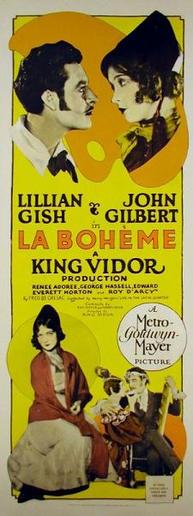A blog formerly known as Bookishness / By Charles Matthews
"Dazzled by so many and such marvelous inventions, the people of Macondo ... became indignant over the living images that the prosperous merchant Bruno Crespi projected in the theater with the lion-head ticket windows, for a character who had died and was buried in one film and for whose misfortune tears had been shed would reappear alive and transformed into an Arab in the next one. The audience, who had paid two cents apiece to share the difficulties of the actors, would not tolerate that outlandish fraud and they broke up the seats. The mayor, at the urging of Bruno Crespi, explained in a proclamation that the cinema was a machine of illusions that did not merit the emotional outbursts of the audience. With that discouraging explanation many ... decided not to return to the movies, considering that they already had too many troubles of their own to weep over the acted-out misfortunes of imaginary beings."--Gabriel García Márquez, One Hundred Years of Solitude
Monday, October 26, 2015
La Bohème (King Vidor, 1926)
Bohème without Puccini, except for a few themes from the opera interpolated into the piano accompaniment for the print shown on Turner Classic Movies. The screenplay by Fred De Gresac is said to be "suggested by Life in the Latin Quarter" by Henri Murger, which is also the source of the opera libretto by Luigi Illica and Giuseppe Giacosa. But since the librettists took liberties with Murger, combining several characters and incidents from his fiction, it's pretty clear that De Gresac was a good deal closer to the opera version than to Murger. It's very much a vehicle for Lillian Gish, who wanted John Gilbert to play Rodolphe to her Mimi, but sometimes seems to be playing an anything-you-can-do-I-can-do-better game with her co-star. There is, for example, a scene in which Gilbert acts out the proposed ending to the play he is writing, with much swashbuckling. Then, a few scenes later, Gish acts it out again with similar verve for a potential backer for the play. Their courtship is a surprisingly hyperactive one, particularly in the scene in which they and their fellow bohemians go on a picnic that involves much running about. And Gish is not content to die calmly: On hearing that she won't live through the night, she makes a mad dash across Paris to be reunited with her lover, at one point allowing herself to be dragged along the streets while hanging onto the back of a horse-cart. Gilbert poses with feet apart and arms akimbo once too often, and the starving bohemians are given to much dashing and dancing. (Among them is the endearing and enduring Edward Everett Horton as Colline.) It's all a bit too much, and I have a feeling that the TCM print is being shown at the wrong speed, giving it that herky-jerky quality we used to attribute to silent films before experts corrected the speed at which they should be projected. The costumes are by the celebrated designer Erté, who is said to have had so much trouble working with Gish that he gave up designing for Hollywood.
Links:
Edward Everett Horton,
Erté,
Fred De Gresac,
John Gilbert,
King Vidor,
La Bohème,
Lillian Gish,
movies
Subscribe to:
Posts (Atom)
